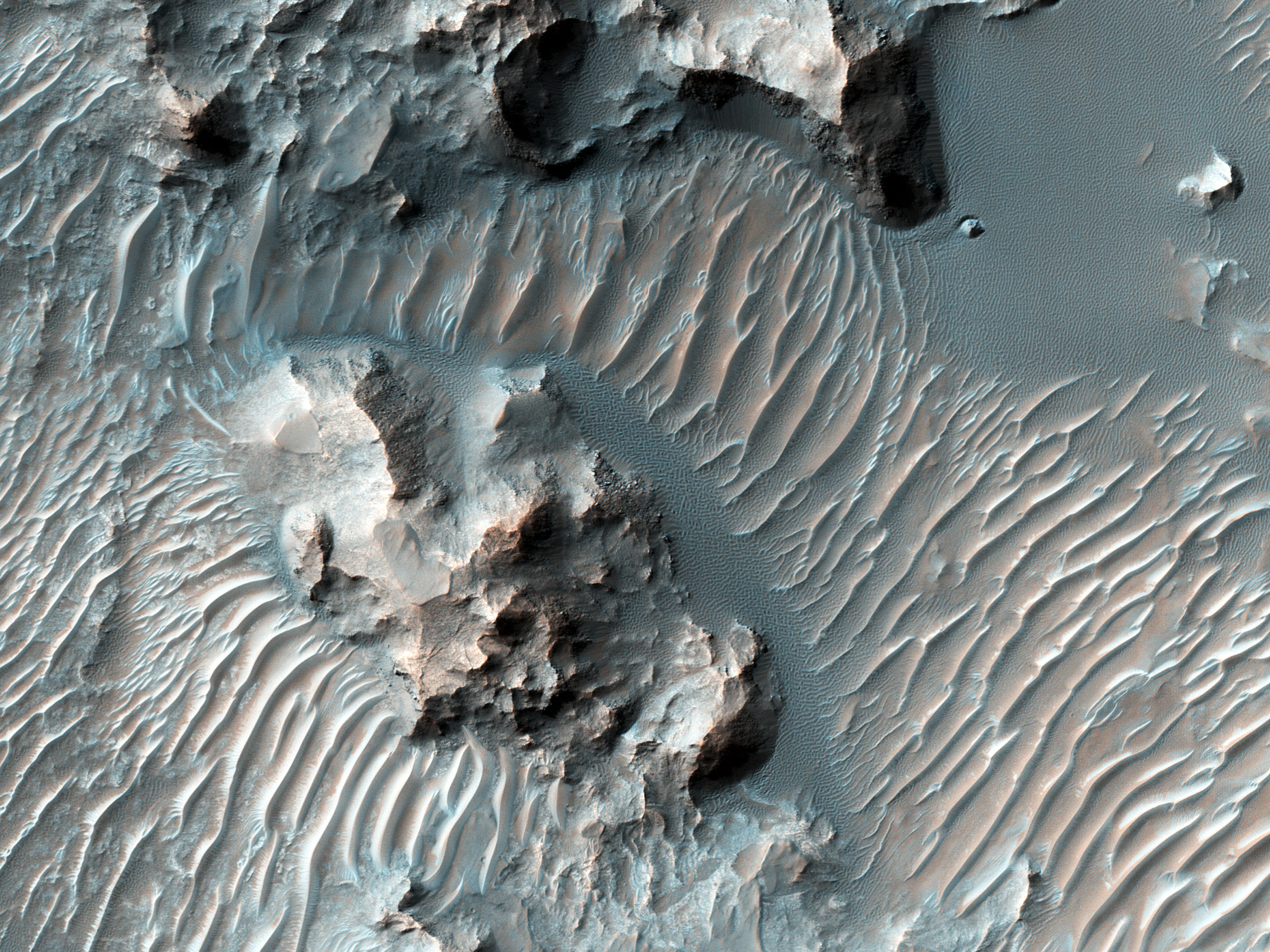NASA's HiRISE camera captures large, heavily-infilled crater on Mars

This picture captured by NASA's High-Resolution Imaging Science Experiment (HiRISE) camera provides a captivating glimpse into the fascinating features of Schaeberle Crater, a massive crater that boasts a wealth of intriguing characteristics.
The HiRISE image showcases a remarkable window into the crater fill deposit, showcasing eroding bedrock and wind-formed landforms. The pit is located in close proximity to the image's geometric center, making it a central pit crater.
Central pit craters are believed to emerge as a result of impact melt flowing through subsurface fractures in the crater's deepest region, occurring shortly after the initial impact event.
Another shot captured by HiRISE shows light-toned bedrock and a tiny cliff in the midst of gradual erosion. Located beneath this cliff are a variety of aeolian features including ripples and transverse aeolian ridges (TAR). According to the HiRISE team, the sand constituting the smaller, bluish ripples may be weathering out from the cliff face, while the larger, light-toned TAR formations are believed to be presently inactive.
HiPOD: Erosion and Deposition in Schaeberle CraterSchaeberle Crater is a large, heavily-infilled crater with many interesting features. This image showcases eroding bedrock and wind-formed landforms.https://t.co/11tZp21kruNASA/JPL-Caltech/UArizona#Mars #science #NASA pic.twitter.com/bcaEYsnomS
— HiRISE: Beautiful Mars (NASA) (@HiRISE) May 20, 2023
The HiRISE camera is a key science instrument aboard NASA's Mars Reconnaissance Orbiter (MRO). By utilising cutting-edge technology, the powerful camera captures high-resolution and detailed images of the Martian surface. With an unprecedented high-resolution capability of imaging up to 30 centimetres per pixel, HiRISE surpasses any existing orbiter technology currently employed for the exploration of the Red Planet.
Operated by the University of Arizona's Lunar and Planetary Laboratory (LPL), the HiRISE camera has collected a wealth of data since its arrival at Mars in 2006. It has been instrumental in enhancing the scientific community's understanding of Mars.
- READ MORE ON:
- NASA HiRISE camera
- HiRISE MRO Mars
- HiRISE Mars images










